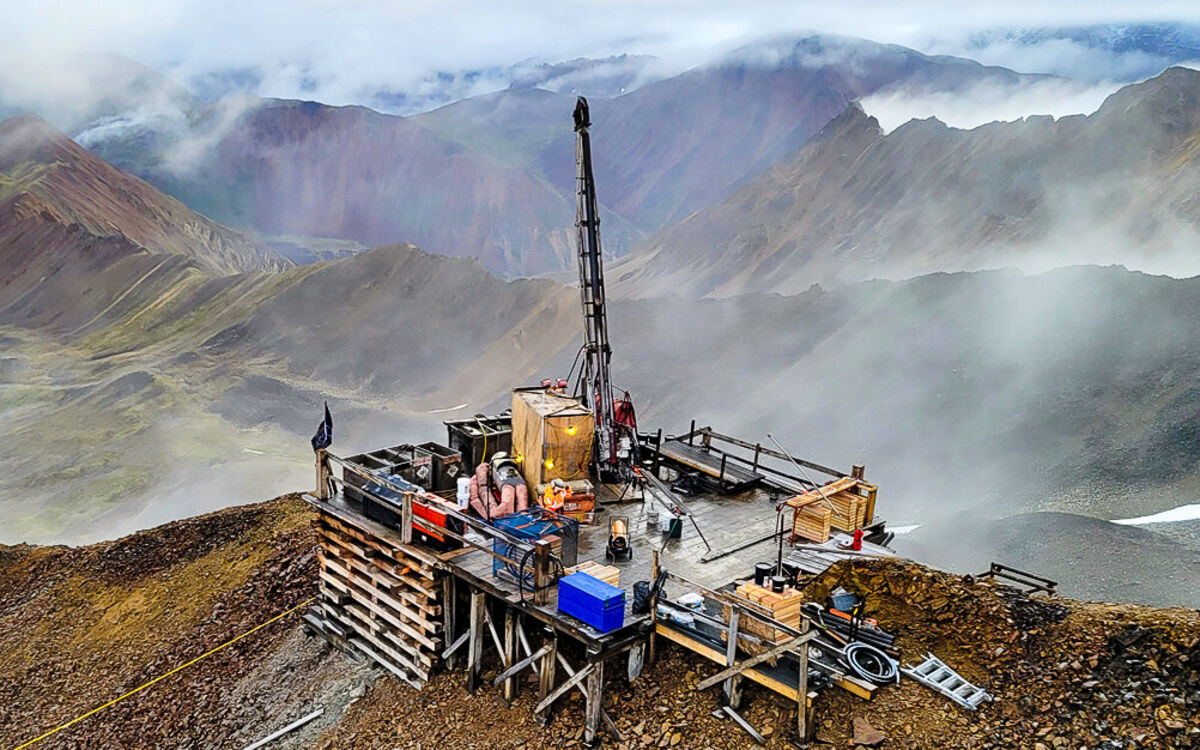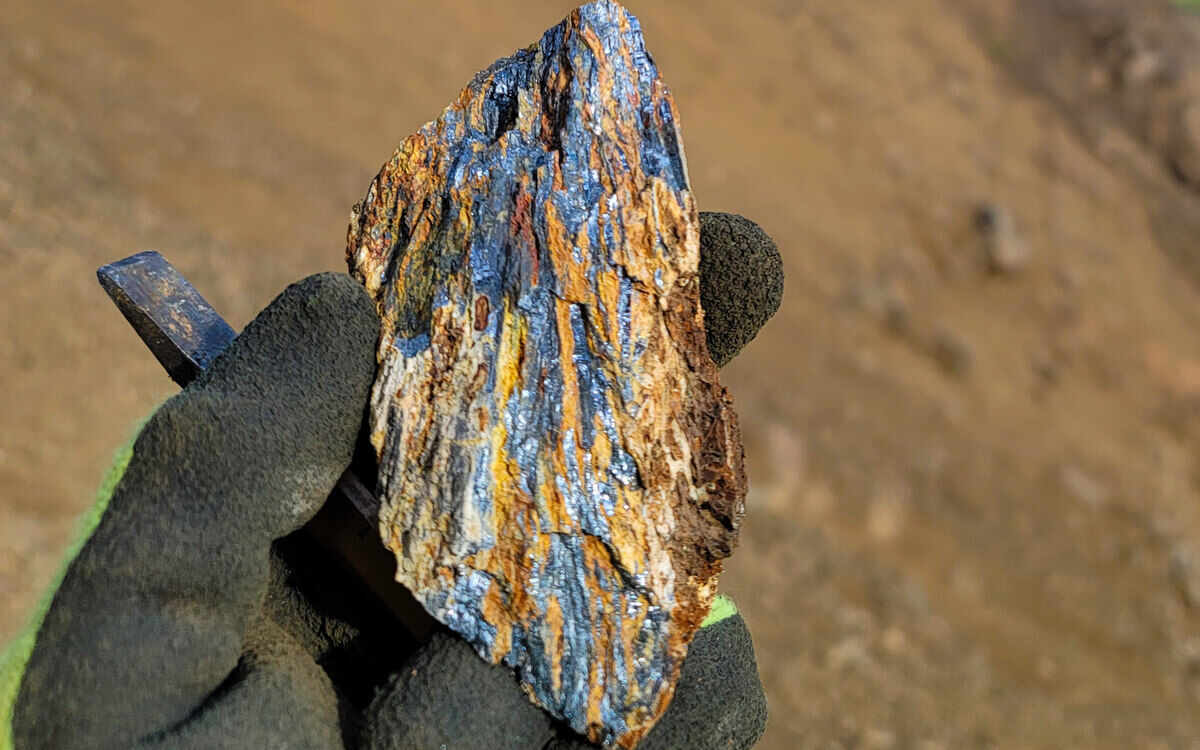During a recent visit to Alaska that included meetings with Gov. Mike Dunleavy and other state officials, Australian Consular-General Tanya Bennett touted Nova Minerals Ltd.’s Estelle gold-antimony project as an important example of the strong partnership between Australia and the United States on critical minerals and strategic resource security.
“It is a great example of collaboration between Australia and the U.S. on critical minerals, something that is so important to our economic security going forward,” Bennett said while standing on a drill pad at Estelle.
The Australian Consular-General is the latest on a growing list of dignitaries that Nova has hosted at Estelle or met with regarding the economic opportunities and national implications of the gold-antimony project about 100 miles northwest of Anchorage.
Matsu Borough Mayor Edna DeVries, Gov. Dunleavy, and Alaska’s delegation to Washington, DC, have all voiced support for Estelle and the proposed West Susitna Road that would connect the project to Alaska’s highway system.
“Momentum continues to build as the Estelle Gold and Critical Minerals Project gains significant strategic recognition,” said Nova Minerals CEO Christopher Gerteisen.
Estelle’s golden potential
In addition to critical mineral synergies, Australia’s interest in Estelle is rooted in the fact that Nova is among a group of Australian companies that recognized Alaska’s vast and underexplored mineral potential and headed north to help unlock that potential about eight years ago.
Since optioning Estelle in 2017, Nova has systematically outlined multi-million-ounce gold resources, while also exploring the critical minerals potential across the district-scale property.
Now, as a company listed on both the Australian Securities Exchange and the NASDAQ, Nova is focused on developing both gold and antimony mines at Estelle.
On the precious metals side of the project, Nova has outlined more than 5.2 million ounces of gold in resources compliant to U.S. Securities and Exchange Commission S-K 1300 standards in two project areas at Estelle – the large bulk-tonnage Korbel area at the north end of the 198-square-mile (514 square kilometers) property and the higher-grade RPM area about 16 miles (25 kilometers) to the south.
Nova plans to establish its first gold mine at RPM, which hosts 4.4 million metric tons of the overall measured and indicated resources averaging 2.5 g/t (330,000 oz) gold, plus 46 million metric tons of the inferred resource averaging 0.5 g/t (800,000 oz) gold.
This resource does not include the results from 21 holes drilled at RPM last year, and Nova is in the midst of additional resource upgrade and expansion drillingat the deposit. A new resource calculation that includes the 2024 and 2025 drilling will serve as the foundation for a feasibility study that details the economic and engineering parameters of establishing an initial mine at RPM.
While Nova is making significant headway on establishing a gold mine at RPM, much of the attention the company has attracted is due to the high-grade antimony it discovered at Estelle.
Major inflection point is approaching
The company is currently carrying out drilling to establish a high-grade antimony-gold deposit at Stibium, where sampling carried out last year outlined a 400-by-800-meter area of high-grade antimony. Rock samples with as much as 60.5% antimony have been collected from what is shaping up to be an important source of this increasingly critical mineral.
The high-grade antimony potential at Stibium has attracted the attention of officials at the U.S. Department of Defense, which is currently considering providing financial support for a mine there, as well as a separate antimony processing plant in Alaska.
DOD’s interest in backing an antimony mine at Estelle follows an export ban by China, which has near-complete control over global antimony processing.
The ban leaves the Pentagon and manufacturers with few alternatives for the metalloid critical to ammunition, car batteries, fireproofing compounds, high-tech devices, specialty glass, and other products used by both civilians and the military.
“With the February 2025 RFC Ambrian report naming Estelle as one of only nine global projects with near-term antimony production potential, alongside our rapidly expanding gold resource, we believe Estelle is emerging as a rare and valuable dual-commodity asset,” said Gerteisen.
This dual-commodity asset, being advanced by a dual-listed company, is what drew the visit by Australian Consular-General Bennett during her trip to Alaska to discuss critical minerals, economic development, energy security, and investment opportunities with state officials.
Australian Consulate-General Los Angeles
Gerteisen said Nova is encouraged by the Australian government’s interest, alongside the support that the Estelle project has received at the local, state, and federal levels in the U.S.
“Estelle is evolving from a single project into a strategic mineralized district – potentially critical to Western efforts to secure supply chains and reduce reliance on foreign sources of critical minerals,” the Nova CEO said. “With all key elements now appearing to converge, we believe a major inflection point is approaching.”


